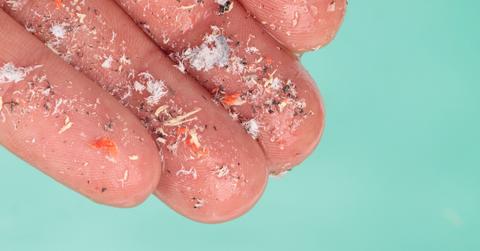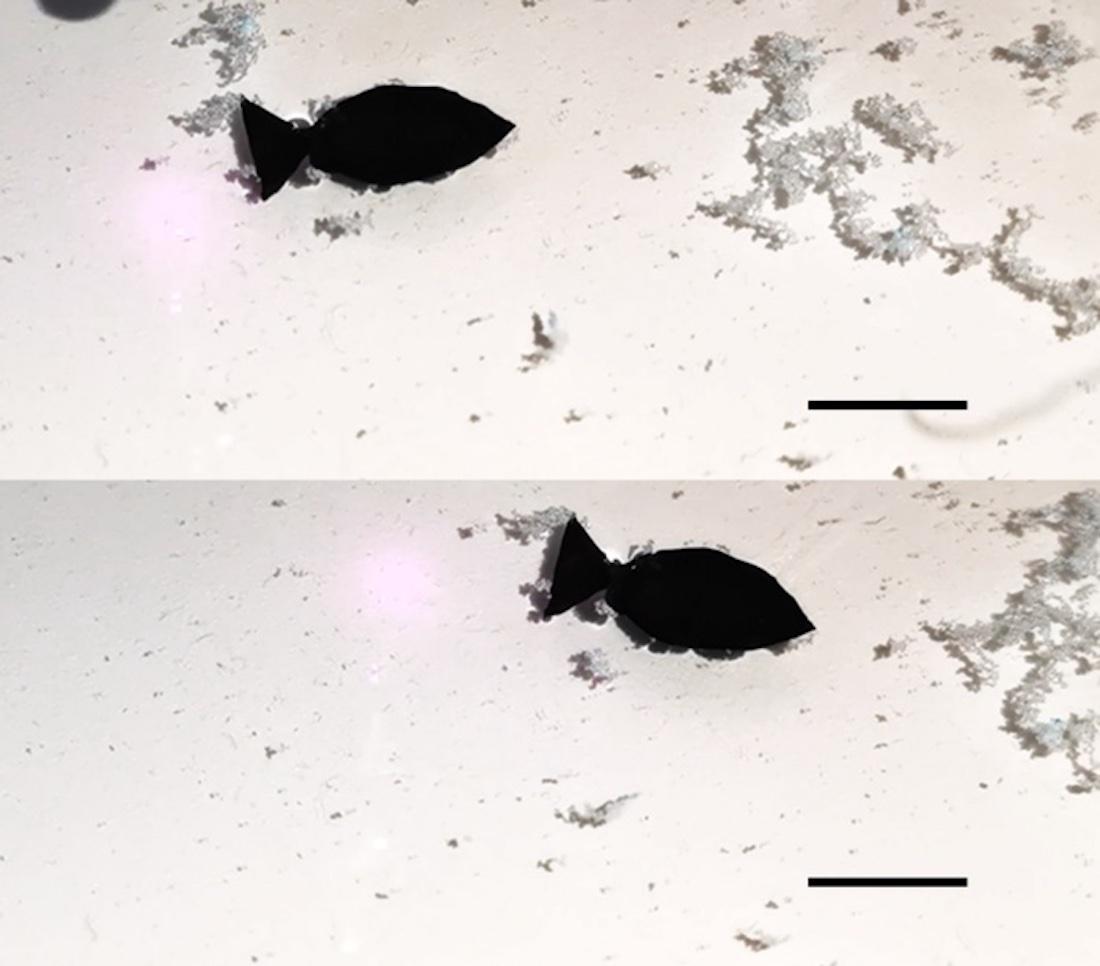This Swimming Robot Fish Can Absorb Microplastics From the Ocean
Published June 23 2022, 12:39 p.m. ET

Wouldn’t it be great if instead of microplastics poisoning fish, they could be food for fish? A team of researchers have invented a robotic fish that can “eat” microplastics in the ocean, thereby removing these tiny pieces of plastic pollution from our water.
If innovators find a way to scale this creation, it could make a massive difference in cleaning up our oceans, in public health, and more. Here are the details.

A light-activated fish-shaped robot collects microplastics as it swims (scale bar is 10 millimeters).
Microplastics can be removed from the ocean with these swimming robot fish.
The new research comes from a group of scientists based in China, and was published in the journal Nano Letters this week. The study details the researchers’ development of a proof-of-concept swimming robot.
The study notes that typically, soft robots are made of hydrogels or silicone rubber, which are difficult to make functional, and can easily break; so instead, the researchers created an elastomer actuator, which is known for being able to mimic the natural motions of vertebrae animals. They were inspired to try this material after studying nacre, aka mother-of-pearl, as it is both strong and flexible, as per a news release shared by the American Chemical Society .
The fish-shaped robot they created is 13 millimeters long (about half an inch), but strong enough to carry up to 5 kilograms (about 11 pounds) of weight, according to The Guardian. The study notes that the fish is ultra durable; able to self-heal from damage such as cuts; and can swim faster than most soft robots, at speeds up to 2.67 body lengths per second.
But most importantly, the researchers observed that the robot can absorb polystyrene microplastics, and hold onto them. In practice, the robot could be collected from the water after it has absorbed microplastics and other pollutants to capacity. At that point, the researchers can “further analyze the composition and physiological toxicity of the microplastics,” lead author Yuyan Wang, of the Polymer Research Institute at Sichuan University, told The Guardian.
“It is of great significance to develop a robot to accurately collect and sample detrimental microplastic pollutants from the aquatic environment,” Wang added. “To the best of our knowledge, this is the first example of such soft robots.”
Where do microplastics come from? Here’s the meaning of these tiny pieces of plastic.
Microplastics are pieces of plastic litter that measure 5 millimeters in length or shorter. Plastic does not safely biodegrade — instead, it breaks down over and over, into smaller and smaller pieces, resulting in microplastics. Microplastics come from various sources, including single-use plastic that is discarded as trash or litter; plastic fishing equipment, which is typically tossed into oceans by fishers; and synthetic clothing, which sheds microfibers when washed.
These microplastics wind up in the environment, and often in natural bodies of water, such as oceans and rivers. In water, marine organisms often eat microplastics, assuming they are food. This can trick their bodies into thinking they are full, and result in them starving to death.
What do microplastics do to humans?
And microplastics are not only harming fish — they are also affecting humans, via eating sea animals, drinking water, and a number of other sources. Microplastics have been found in human blood and human organs, including human placentas. Alarmingly, a 2019 study found that the average human swallows around 2,000 microplastics every single week.
More research is needed to determine if microplastic exposure and ingestion is harmful to humans, as well as to scale up projects such as these microplastic-eating robo-fish that can reduce microplastic pollution and exposure.
But more importantly, we need to cut plastic pollution off at the source — governments, the fishing industry, the fossil fuel industry, and plastic manufacturers need to take responsibility for the pollution, and start a rapid transition away from single-use plastic.